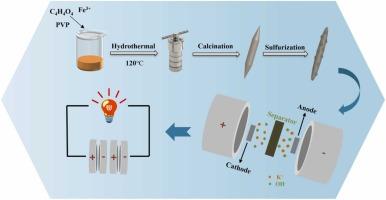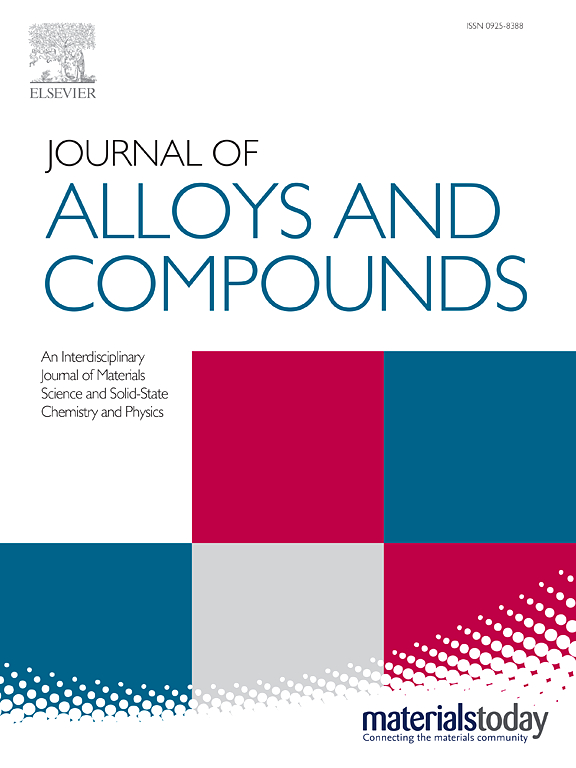通过 MOF 示踪硫化法合成用于高性能混合超级电容器的 Fe₃O₄/FeS₂ 复合材料
IF 5.8
2区 材料科学
Q2 CHEMISTRY, PHYSICAL
引用次数: 0
摘要
开发用于超级电容器的先进阳极材料对于推动新能源技术领域的创新至关重要。尽管铁基材料前景广阔,但其导电性和循环稳定性仍然是一项挑战。本研究采用牺牲型 MOF 模板和固态硫化工艺合成了 Fe3O4/FeS2 复合材料。复合材料保留了 Fe-MOF 的形态,通过异质硫化形成了大量纳米级颗粒。在电流密度为 1 A g-¹ 时,SMFO-2 复合材料的比容量为 208.5 mAh g-1。在以 SMFO-2 为阳极、超电活性炭(AC)为阴极构建的混合超级电容器(HSC)中,该器件在 2 A g-¹ 的条件下循环 10,000 次后,容量保持率达到 78.6%。此外,这种 HSC 的最佳能量密度为 28.8 Wh kg-¹,功率密度为 375 W kg-¹,成功地为一个小灯泡供电,突出了其在实际应用中的巨大潜力。本文章由计算机程序翻译,如有差异,请以英文原文为准。

Synthesis of Fe₃O₄/FeS₂ composites via MOF-templated sulfurization for high-performance hybrid supercapacitors
The development of advanced anode materials for supercapacitors is crucial for driving innovation in the field of new energy technologies. Although iron-based materials show promise, their electrical conductivity and cyclic stability remain challenges. In this study, Fe3O4/FeS2 composites were synthesized using a sacrificial MOF template and a solid-state sulfurization process. The composite retained the morphology of Fe-MOF, with numerous nanoscale particles formed through heterogeneous sulfurization. The SMFO-2 composite exhibited a specific capacity of 208.5 mAh g-1 at a current density of 1 A g⁻¹. In a hybrid supercapacitor (HSC) constructed with SMFO-2 as the anode and super-electric activated carbon (AC) as the cathode, the device demonstrated a capacity retention rate of 78.6% after 10,000 cycles at 2 A g⁻¹. Furthermore, the HSC achieved an optimal energy density of 28.8 Wh kg⁻¹ with a power density of 375 W kg⁻¹, successfully powering a small bulb, highlighting its strong potential for practical applications.
求助全文
通过发布文献求助,成功后即可免费获取论文全文。
去求助
来源期刊

Journal of Alloys and Compounds
工程技术-材料科学:综合
CiteScore
11.10
自引率
14.50%
发文量
5146
审稿时长
67 days
期刊介绍:
The Journal of Alloys and Compounds is intended to serve as an international medium for the publication of work on solid materials comprising compounds as well as alloys. Its great strength lies in the diversity of discipline which it encompasses, drawing together results from materials science, solid-state chemistry and physics.
 求助内容:
求助内容: 应助结果提醒方式:
应助结果提醒方式:


